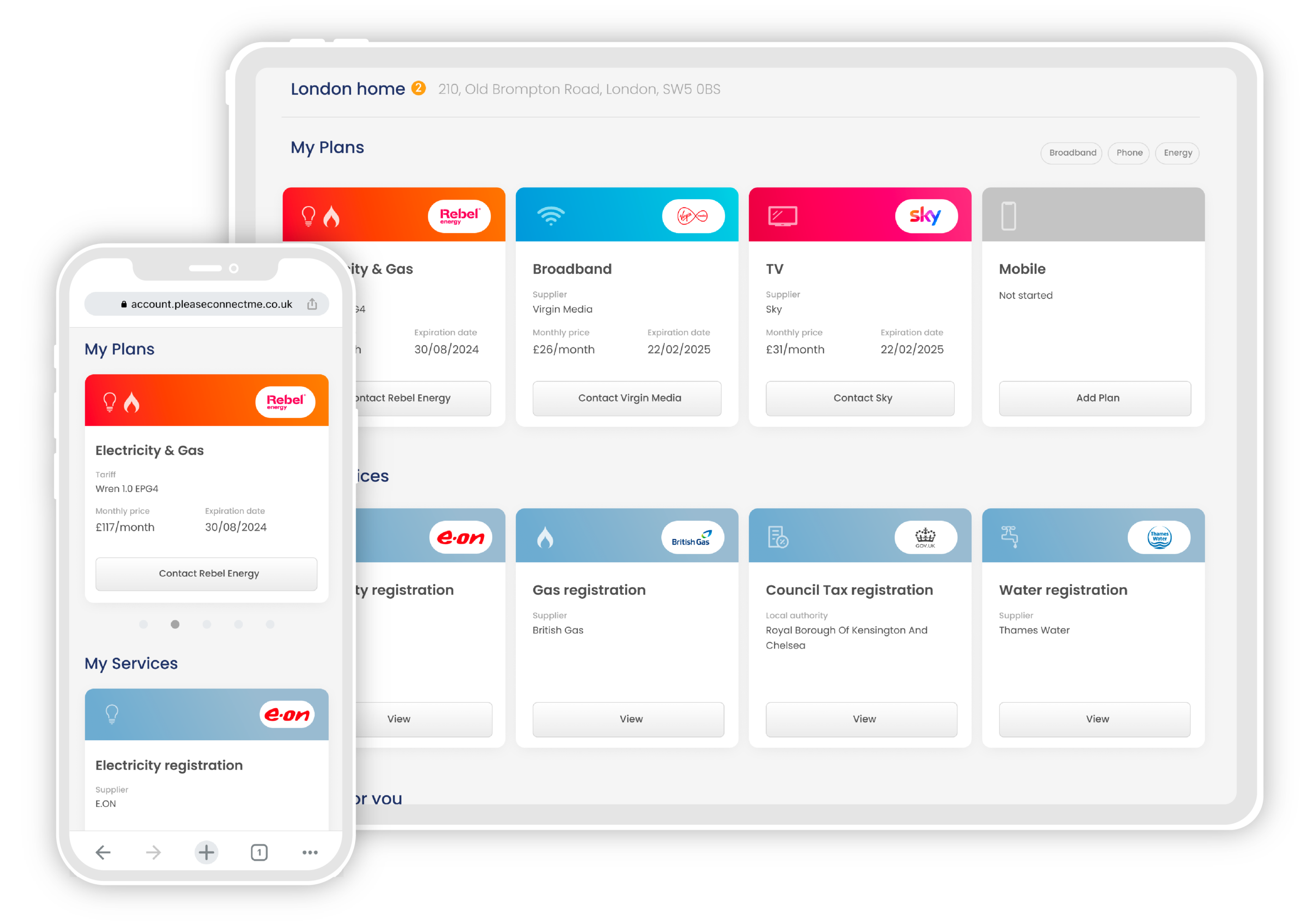UK residents have a choice of two types of energy tariffs in their homes – a standard variable tariff or a fixed rate tariff. Choosing the right option for your home will have a big impact on how much you pay for your gas and electricity.
To make things easier, we’ve broken down everything you need to know about variable energy tariffs in the article below. We’ve done the same for fixed-rate tariffs, which you can read here.
Still not sure which tariff is right for you? Book a free call with one of our Connections Experts and they’ll be able to take you through your energy switch from start to finish and get you set up with the perfect tariff for you.
What is an energy tariff?
An energy tariff is an agreement between yourself and your energy provider for how much you’ll pay for the energy you use.
Your tariff is made up of two parts – the per-unit cost and the daily standing charge. You’ll pay the per-unit cost for each kilowatt-hour (kWh) of energy you use, and the standing charge for every day you are connected. You’ll have a different tariff for each fuel type you use – electricity and, if you have a connection, gas.
Some energy tariffs stay at the same price for a pre-agreed length. These are called fixed tariffs. Others are adjusted throughout the year. These are variable energy tariffs.
What is a standard variable tariff?
A standard variable tariff is a common energy tariff offered by all UK suppliers. Rather than fixing energy prices at one level, unit rates and daily standing charges are adjusted every 3 months based on the energy price cap.
The price cap is set by Ofgem, the UK regulator for energy. Currently, it’s updated on January 1st, April 1st, July 1st and October 1st. The energy price cap is expressed as the annual total an average household of 3-4 occupants will pay for gas and electricity.
Energy suppliers then set their variable tariffs so that a typical household spend will match this price cap based on average usage. Your own bill will always be based on how much energy you have used.
What is the current standard variable tariff?
As of the date of writing, the standard variable tariff has just been adjusted based on the 1st of July price cap. You can see the rates for the average standard variable tariff in the table below.
|
|
Gas |
Electricity |
|
Unit Rate |
5.48 p/kWh |
22.36 p/kWh |
|
Daily Standing Charge |
31.41p |
60.12p |
Figures are rounded to two decimal places and based on the average for people in England, Scotland and Wales average paying by Direct Debit. These prices include VAT. Unit rate prices shown are in pence per kilowatt-hour.
Standard variable tariffs are next set to change on October 1st. While the new rates have not yet been announced, current projections are that they will increase by around 12%.
Is a standard variable tariff better than a fixed-rate tariff?
As energy experts, we currently recommend choosing a fixed rate tariff for a few reasons. During the UK energy crisis, energy prices shot up and standard variable tariffs were the best value – and often only – option available. Since then, energy prices have stabilised and energy companies have begun offering competitive fixed-rate tariffs.
Many of these tariffs are very close to the current price cap, and with prices predicted to rise in October, they will soon be even better value. Meanwhile, customers who are on standard variable tariffs will see their prices rise when the price cap does.
We’ve seen energy prices rise steadily over the last five years, even outside of the energy crisis. Industry analysts expect this trend to continue throughout the 2020s.

How the energy price cap, which determines the price of a standard variable tariff, has changed over time.
Not only does a fixed rate tariff protect you from sudden price jumps, but you also have the bonus of knowing approximately how much your energy bills will be for the year and being able to budget accordingly.
What’s the default tariff in the UK?
When you move into a new house you are automatically placed on a standard variable tariff. This is why they are sometimes called default tariffs.
Suppliers do this so they can begin charging you immediately at market rates. When wholesale energy costs increase, so do customer prices.
If you have not chosen a new energy tariff since moving into a new home, or if your current tariff is more than 12 months old, you are almost certainly on a standard variable tariff. If that’s the case, you could save over the next year by switching to a fixed-rate tariff.
Looking for a great value fixed-rate tariff? We recommend Octopus Energy, the UK’s top-rated supplier for customer service and Which? Magazine’s recommended provider for 7 years running. Find out more and switch in just a few minutes here.
Read more about energy in the UK:













